| HOME |
| Hotels |
| Apartments |
| Attractions |
| Restaurants |
| Tickets & tours shop |
| Tours |
| Maps & travel planners |
| Airports & transport |
| Maps |
| Events |
| Shopping |
| Contact us |
|
| Pictures Park Guell Barcelona |
Pictures Park Guell BarcelonaOne of Barcelona's Top 10 attractions is Park Guell by Catalan and Spanish architect Antoni Gaudí. Tickets Park Guell Park Guell was built in the years from 1900 to 1914 on a plot of land that measures 17.18 ha (0.1718 km²) in total. When Park Guell was created, there were many factories in Barcelona city center which was very polluted. Count Eusebi Guell bought a piece of land on Carmel hill to build a housing project where wealthy citizens could build a house and escape the dirty air and noise of the city center. There was already a manor house on the site of Park Guell, called Larrard House or Muntaner de Dalt house, and the land was close to a residential neighbourhood of houses called "La Salut," which means "health" in the Catalan language. So the idea of a garden style city with clean mountain air and lovely views of the city center and Mediterranean seemed like a solid investment.  Antoni Gaudí's Park Guell is on El Carmel hill in the Gràcia district of Barcelona. Park Guell started as a project to create a residential garden city and finally became a public park in 1922. Park Guell today is part of the UNESCO World Heritage Works of Antoni Gaudí. 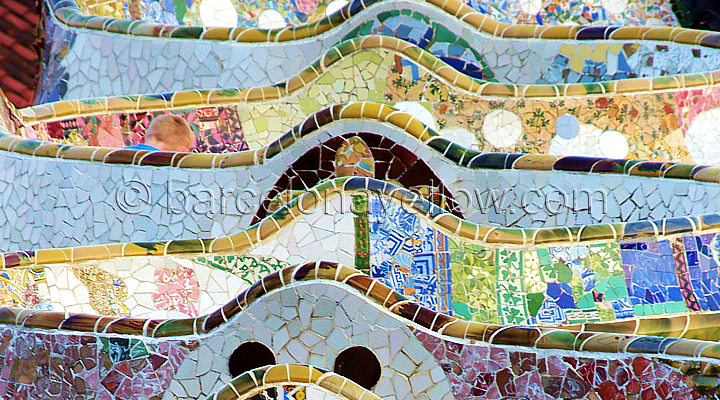 Parc Guell is an public park designed by Catalan architect Antoni Gaudí. It is on the Carmel hill in the upper part of the Gracia district of Barcelona. The ticket price to the monumental area of Park Guell is €13 (2024) if you buy a ticket online. It's a good idea to buy tickets well in advance because only 800 visitors per hour are allowed in the park. Park Guell tickets can be bought up to three months before the visit. Maximum number of 9 tickets per person. Local residents have free access to the park. How to get to Park Guell 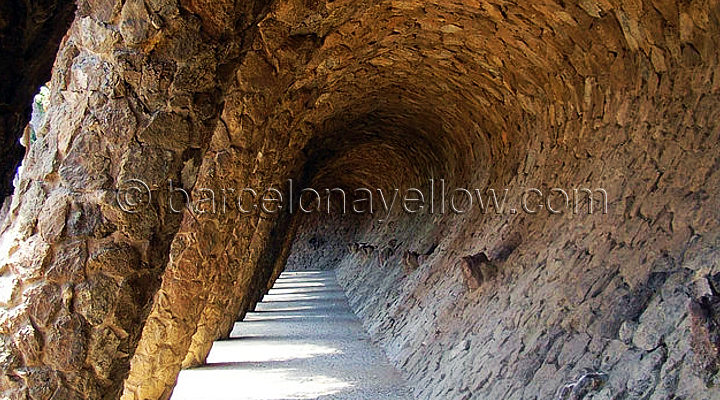 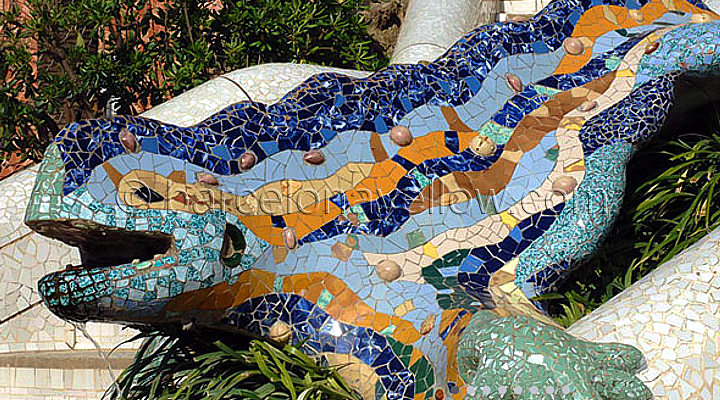
Advertisment
 Parc Guell is one of Barcelona's top attractions. The original idea of Park Guell was to create a private residential garden city for wealthy Barcelona residents, who could then live in Park Guell on El Carmel hill above the smoke and noise of Barcelona's city and with lovely city views. The idea did not work, perhaps due to the remote location, or to the strange ideas and designs that Gaudí created. 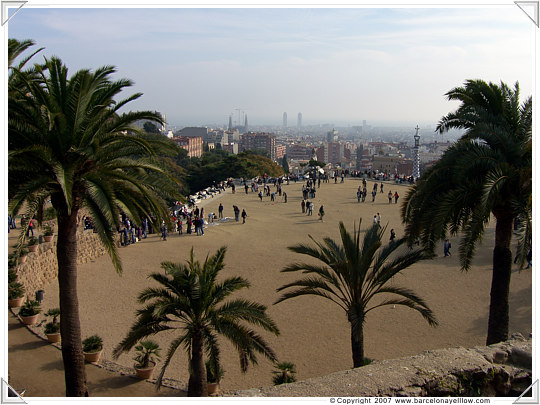 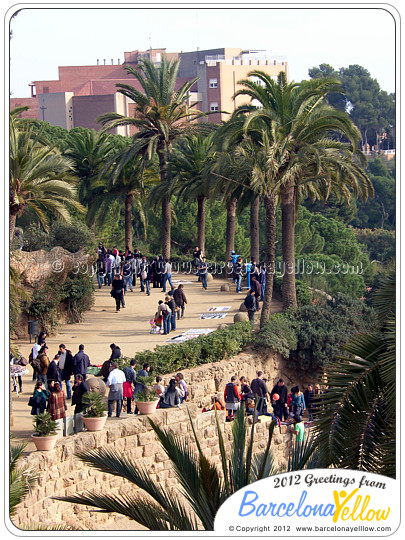 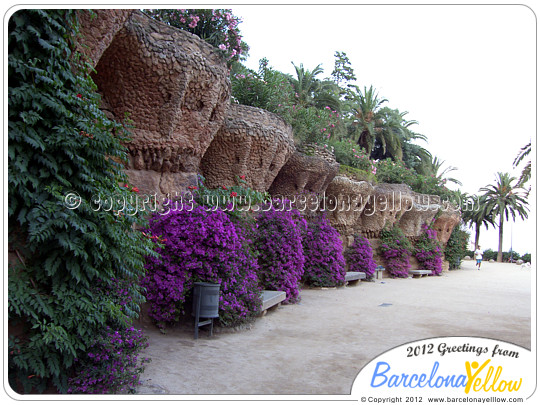 The idea for a private housing development site came from the wealthy Catalan industrialist Count Eusebi Güell i Bacigalupi, who was inspired to create Park Guell after seeing similar housing estates in England. He asked his friend modernist architect Gaudí to design the infrastructure for a housing estate with 60 plots of land for houses on the land on Carmel hill, that he bought in 1899. The estate was called Can Muntaner de Dalt at the time. The location was a rocky hill side on mount Carmel called Muntanya Pelada - Bare Mountain. The idea was that people would buy plots of land and build their own houses. 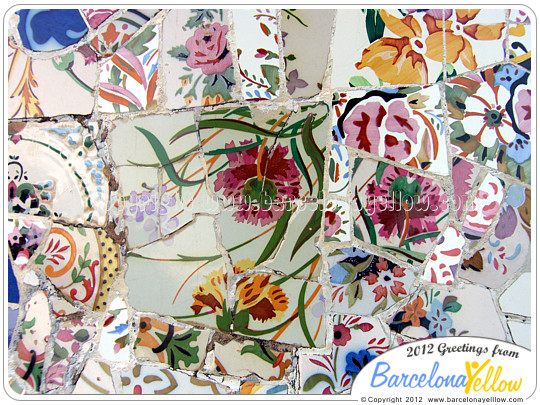 So Park Guell started as a property business venture and not as a park at all. Only one plot of land was ever sold and only two new houses were built in Park Guell, bringing the number of houses in the park to three. None of the three houses were designed by Gaudí - only the part infrastructure was by Gaudí. 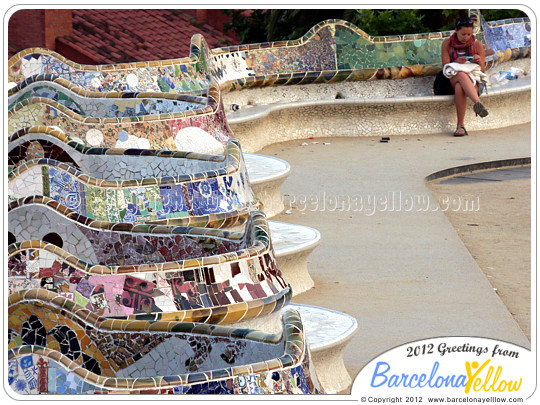 Count Guell himself moved into the Larrard manor house in Park Guell and the Guell family lived there for many years. Count Eusebi Guell died in his house in Park Güell in 1918. In 1923 the Güell family donated the land to the city and Park Güell was became the public park that we can enjoy today. It is fun to walk around and see how this iconic park started as a housing site with roads, viaducts and terraces. The vast central plaza was originally intended as the theatre area for all the residents of the garden city to gather and watch theatre performances. It was called the Greek theatre and Gaudí even designed seating that could be erected for shows, that spectators could enjoy performances with views of the city and the sea in the background. The main plaza is 79 metres long and 36 metres wide. The most famous feature of Parc Guell is the the famous mythical curving serpentine bench snaking its way around the perimeter of the main plaza. This is considered one of Gaudí's most original and famous works. The unique curved shape of the serpentine bench lets the people sitting on it talk privately and easily. The serpentine bench in Park Guell is decorated in a technique using broken shards of tiles and pottery to make a colourful mosaic. This is called 'trencadis' in Catalan, or also called 'pique assiette.' 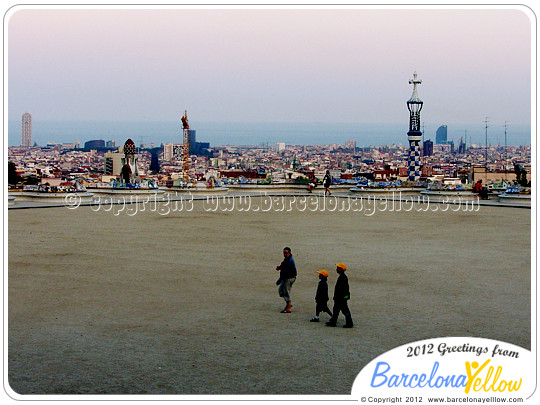 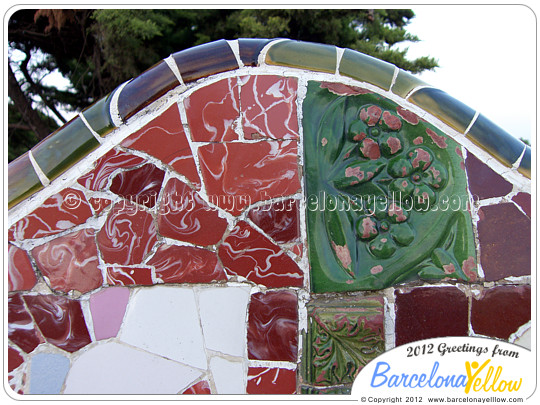 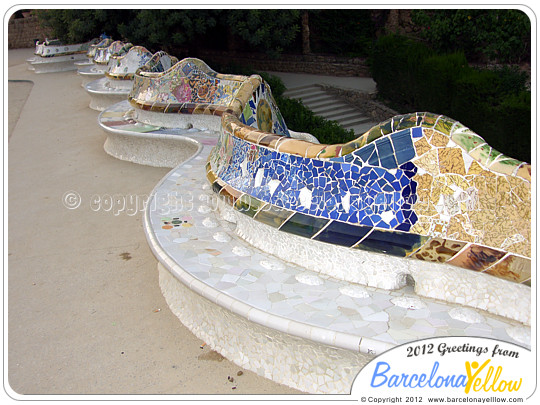 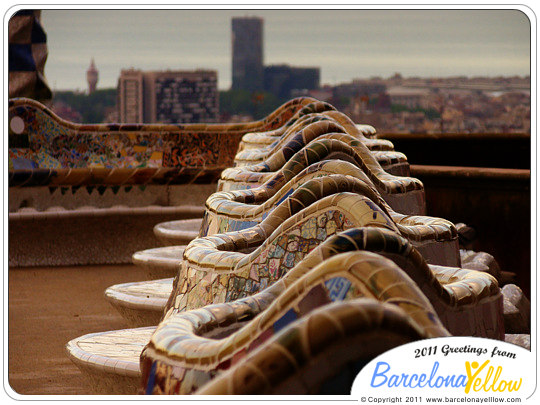 Gaudí and his assistent architect Josep Maria Jujol were pioneers in the trencadis technique. In Park Guell, Jujol created abstract waves and circles of ceramic mosaics interspersed with traditional nature objects like flowers, shells and stars for this magnificent decoration. 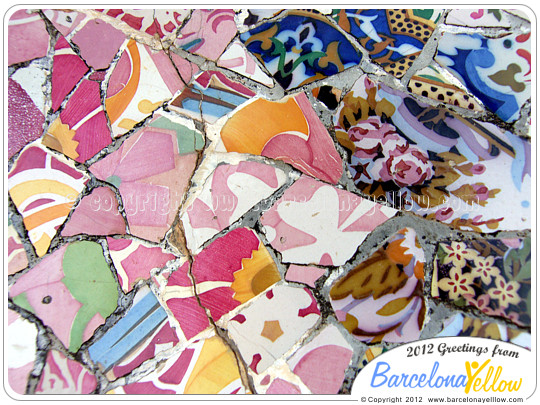 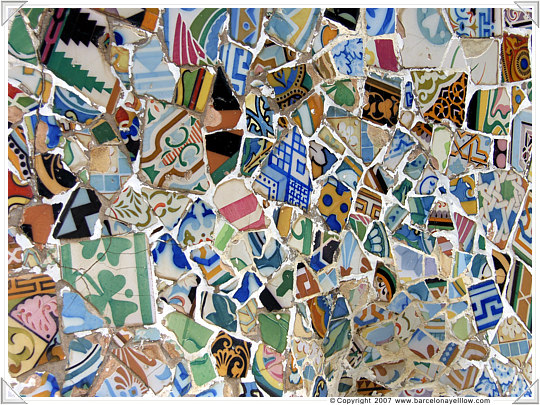 * *Half of the Park Guell plaza is built on the solid ground of the mountain. The outer part is built on top of the Greek doric columns of the Sala Hipóstila below.  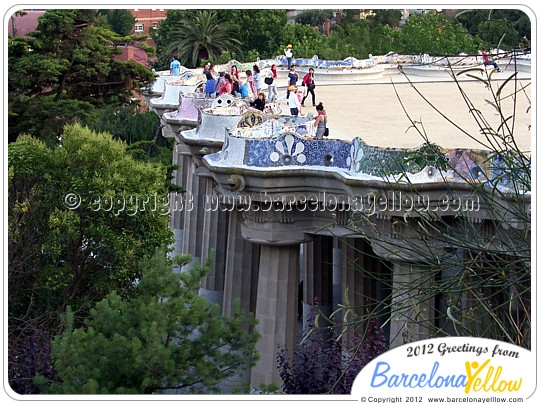 The space about Sala Hipóstila was originally intended to be the market place and designed to be a Greek forest of columns. Below is the doric colonnade. 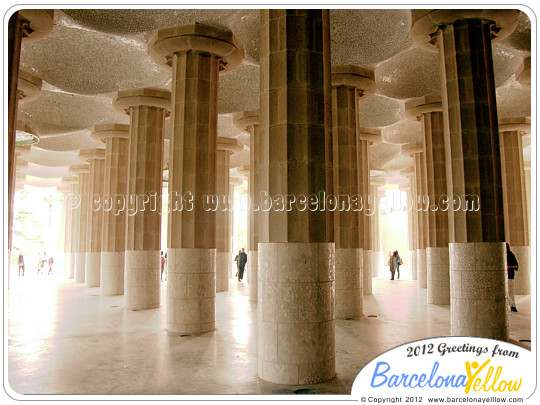 There are 86 classical columns which are 6 meters high and 1.3 meters wide. 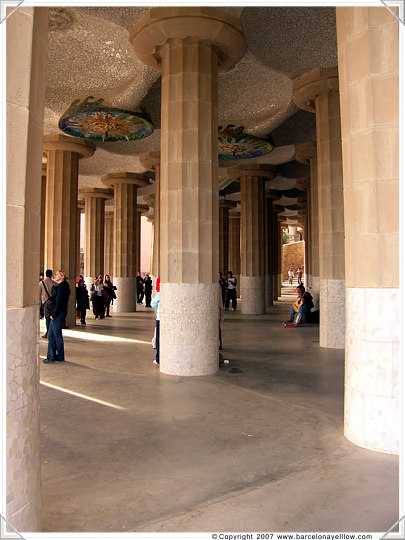 The amazing trencadis on the serpentine bench at Park Guell  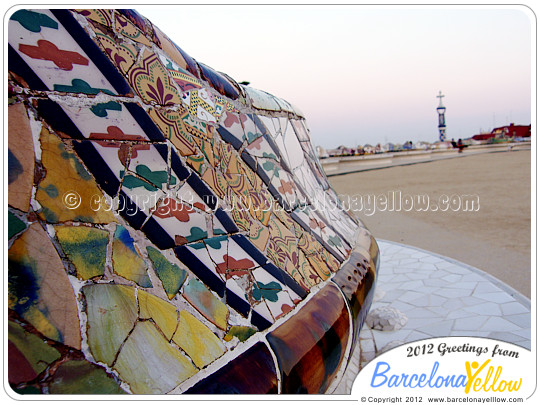 It is said, that when they were decorating the curved bench, the workers would use bits of broken tile and glass, that they had found on their way to work at Park Guell. The architecht Jupol even smashed up some of this own dinner service to find the right pieces. And he raided the kitchen for crockery from the other resident of Parc Guell at the time, who was a lawyer named Martín Trías Domènech. 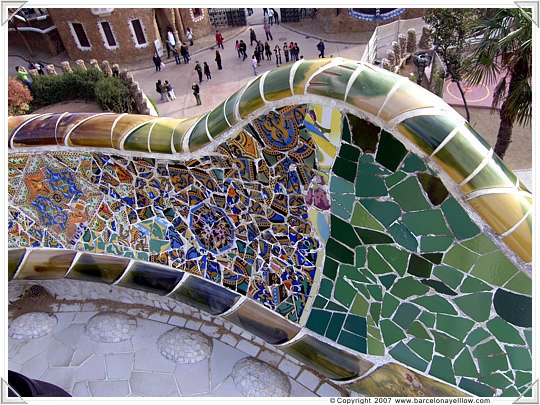 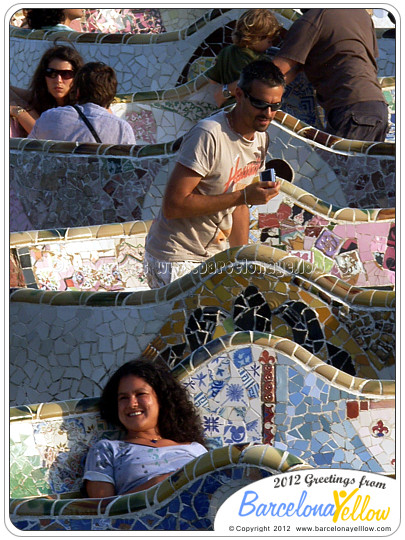 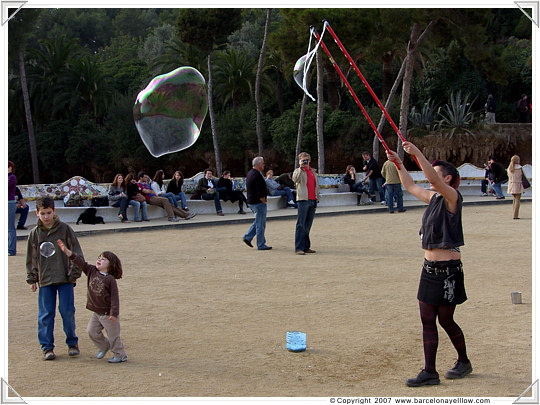 Gaudí designed the gate house and administration building in a fairytale gingerbread house style.  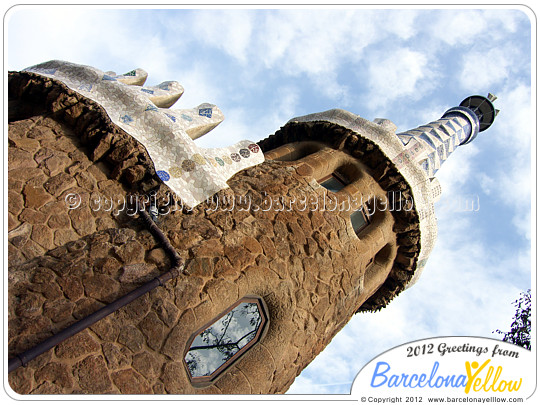 Gaudí's famous mosaic salamander lizard, called 'el drac' the dragon. It guards the fountain at the main entrance to Park Guell on Carrer Olot 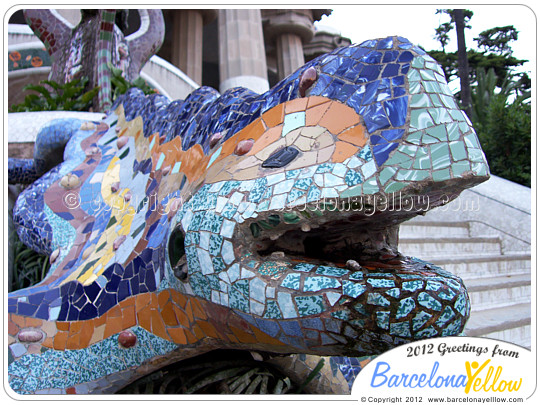 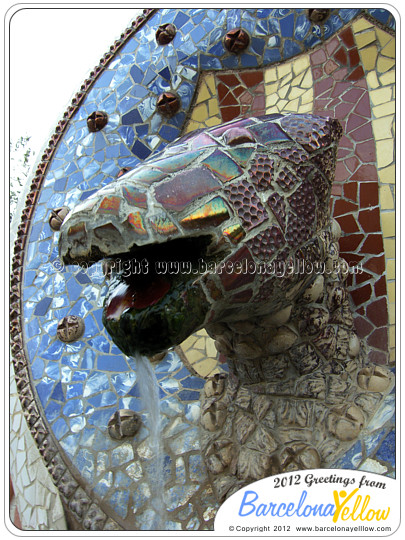 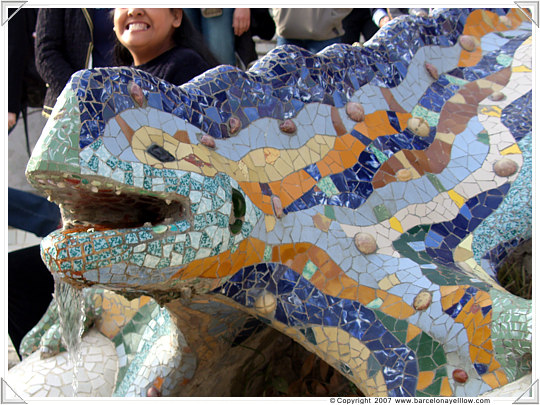  The eternal quest for a funny holiday photo never stops. Now park attendants guard El Drac so pictures like this are not possible. Tips on how to be a good tourist! 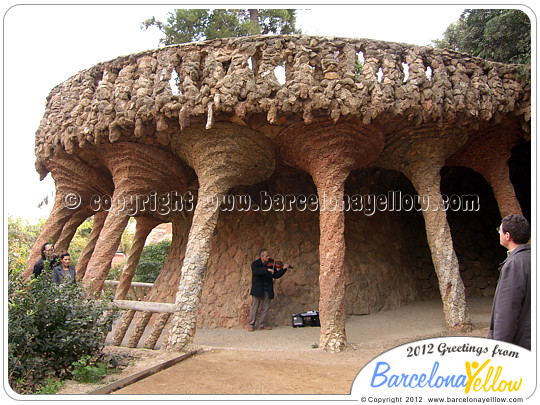  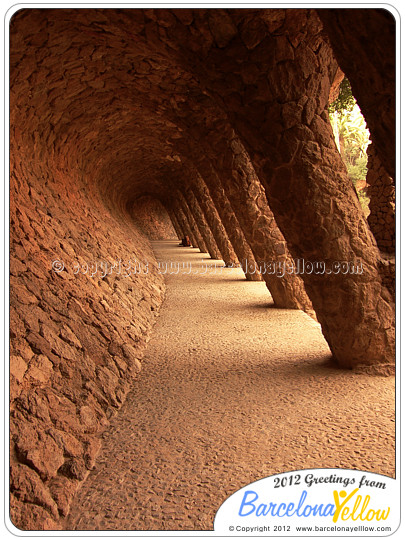 The original plan to sell houses on the garden city development of Parc Guell failed due to lack of interest. Only two houses, apart from the original manor house already on the grounds, which Guell himself moved into - and which is now a public school - were ever built in Park Guell, so the total number of houses was three. None of these houses were designed by Gaudí, although he did make some minor changes to the original manor house. The modernist house below was built on two of the original plots on higher ground by an architect called J. Batllevell. This house was for Guell's lawyer Martín Trías Domènech who became the third resident of Parc Guell. 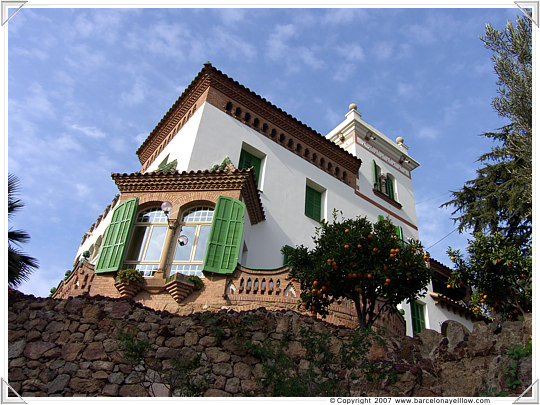 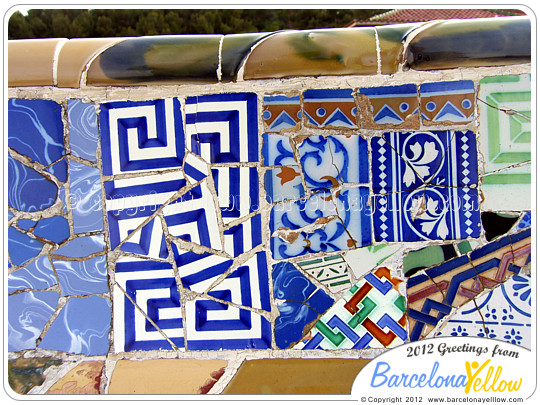 The house below, called la Torre Rosa, was built as a model home in 1904 by Francesc Berenguer for the original property development. When no-one was interested in buying it, Guell suggested that Anton Gaudí buy it. Gaudí moved in with his father and niece in 1906. Sadly his father died the year they moved in and his niece died in 1912. Gaudí lived in the house from 1906 until 1925. At the very end of his life Gaudí moved into his studio at the Sagrada Famila church which he designed and was building on until his death in 1926. Today the Torre Rosa house is the Gaudí house-museum in Barcelona where you can see Guadi's bedroom and a unique collection of furniture designed by Gaudí. Pictures from Gaudí museum 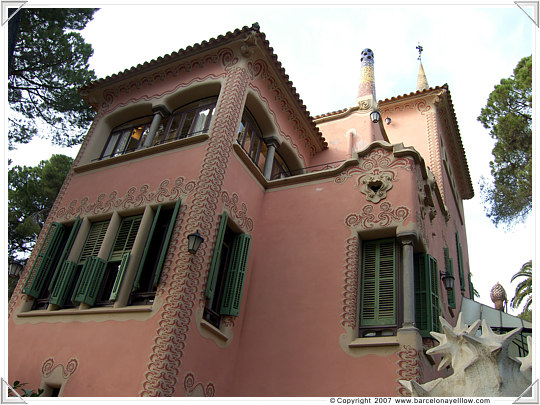 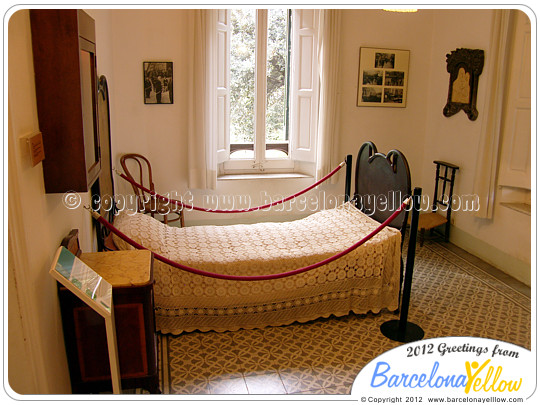 |
| Last Updated on Monday, 10 June 2024 09:52 |
|
|
Friday, 04 July 2025

Barcelona Spain - Barcelona Travel Guide - Copyright 2007-2025
Privacy Policy and Cookies • Legal Disclaimer • Copyright
BarcelonaYellow SiteMap 2025
Barcelona Latest News:
COVID-19 - Barcelona Latest News
Barcelona Safety Guide 2025
Barcelona Top 10 attractions 20254
Plan 3 days in Barcelona 2025
About us
About us
Contact us
Privacy Policy and Cookies
Copyright notice
Legal disclaimer
Twitter Barcelona events
Partnerships
Advertising
COVID-19 - Barcelona Latest News
Barcelona Safety Guide 2025
Barcelona Top 10 attractions 20254
Plan 3 days in Barcelona 2025
About us
About us
Contact us
Privacy Policy and Cookies
Copyright notice
Legal disclaimer
Twitter Barcelona events
Partnerships
Advertising
Accommodation
Hotels in Barcelona
Hotels near Fira Exhibition
Hotels near Camp Nou
Hotels near Cruise Ships
Short Stay Apartments
Practical information
Useful visitor information
How to get to Barcelona airport
Cruise Ship Terminals
Barcelona maps
Airport buses
Barcelona metro
Taxis
Travel cards
Hotels in Barcelona
Hotels near Fira Exhibition
Hotels near Camp Nou
Hotels near Cruise Ships
Short Stay Apartments
Practical information
Useful visitor information
How to get to Barcelona airport
Cruise Ship Terminals
Barcelona maps
Airport buses
Barcelona metro
Taxis
Travel cards
Things to do
Top 10 attractions Barcelona
Photos of Barcelona
Restaurant Guide
Nightlife Guide
Things to do in Barcelona
Barcelona beaches
Book tours and tickets
Skiing near Barcelona
Weather Barcelona
Weather in Barcelona
5 day forecast Barcelona
Top 10 attractions Barcelona
Photos of Barcelona
Restaurant Guide
Nightlife Guide
Things to do in Barcelona
Barcelona beaches
Book tours and tickets
Skiing near Barcelona
Weather Barcelona
Weather in Barcelona
5 day forecast Barcelona
Top Festivals and events
Barcelona Events 2025
Christmas in Barcelona
New Years Eve 2025
MWC 2025 Barcelona
Sant Jordi's Day
Barcelona Marathon
Barcelona Half Marathon
Easter
Festa de Gracia
La Merce Festival
FC Barcelona calendar
Barcelona Events 2025
Christmas in Barcelona
New Years Eve 2025
MWC 2025 Barcelona
Sant Jordi's Day
Barcelona Marathon
Barcelona Half Marathon
Easter
Festa de Gracia
La Merce Festival
FC Barcelona calendar
Moving to Barcelona
Moving to Barcelona
Long term apartment rentals
Relocation agencies
Real estate agencies
Spanish schools
Meeting people
Finding work
Yellow pages directory
Partner websites:
DayTripsBarcelona.com
Stepbac.com
PhotoMemoirs.co
Helpfurl.com
Moving to Barcelona
Long term apartment rentals
Relocation agencies
Real estate agencies
Spanish schools
Meeting people
Finding work
Yellow pages directory
Partner websites:
DayTripsBarcelona.com
Stepbac.com
PhotoMemoirs.co
Helpfurl.com
